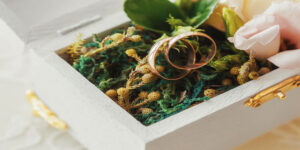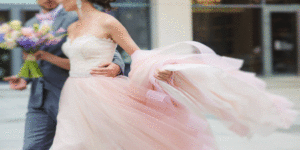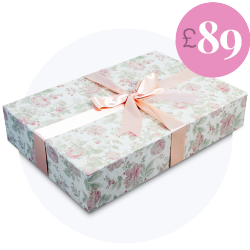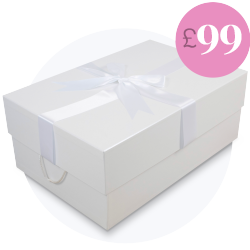Your Ultimate Guide to Vintage Wedding Dresses
Introduction to Vintage Wedding Dresses
Vintage wedding dresses are garments that reflect the bridal fashion of a past era, often defined as being at least 20 years old. These dresses embody unique styles and craftsmanship that set them apart from contemporary designs. Each vintage dress tells a story, showcasing the trends and cultural influences of its time.
Charm and appeal of vintage styles
The charm of vintage wedding dresses lies in their romantic aesthetics and intricate details. Many brides are drawn to the distinct silhouettes, delicate lacework, and luxurious fabrics that characterise these gowns. Vintage styles evoke a sense of nostalgia and timeless elegance, allowing brides to connect with history while expressing their individuality. Furthermore, each vintage dress carries the allure of uniqueness; no two pieces are exactly alike, making it a special choice for a once-in-a-lifetime occasion.
Reasons to choose a vintage wedding dress
Choosing a vintage wedding dress offers several advantages:
- Sustainability: Opting for vintage reduces the demand for new production, making it an eco-friendly choice.
- Quality: Vintage dresses are often crafted from high-quality materials and feature superior construction techniques, ensuring durability.
- Character: Wearing a vintage dress allows brides to stand out and embrace a distinctive style that reflects their personality.
- Affordability: Depending on the era and designer, vintage dresses can be more cost-effective than buying new high-end gowns.
Embracing a vintage wedding dress is not just about the aesthetic; it’s about celebrating heritage and individuality. This connection to the past enriches the bridal experience, creating cherished memories for years to come.
As we explore popular vintage eras and their signature styles, you will see how these historical influences shape modern bridal fashion choices.
Popular Vintage Eras and Their Signature Styles
Overview of Iconic Vintage Wedding Dress Eras
Vintage wedding dresses reflect a rich tapestry of history, with each era contributing its unique style and charm. The allure of vintage bridal fashion lies in its ability to transport brides to different periods, celebrating the aesthetics of romance and elegance from times gone by.
Key Features of Each Era’s Bridal Fashion
- 1920s: Characterised by flapper styles, this era embraced dropped waistlines and intricate beadwork. Fabrics like silk and lace were common, often featuring fringe and embellishments that added movement and glamour.
- 1930s: A shift towards more feminine silhouettes emerged, with bias-cut gowns that hugged the body. This period showcased elegant fabrics such as satin and crepe, often adorned with delicate floral motifs or lace overlays.
- 1940s: The wartime era influenced practicality, leading to simpler designs. Tea-length dresses gained popularity, often featuring fitted bodices and fuller skirts. Fabrics were modest yet stylish, with an emphasis on functionality.
- 1950s: Marked by the iconic ‘New Look’ introduced by Christian Dior, this decade celebrated voluminous skirts and nipped waists. Tulle and organza creations flourished, bringing a sense of whimsy to bridal fashion.
- 1970s: The bohemian spirit of the ’70s led to flowing maxi dresses, often made from lightweight fabrics. These gowns featured bell sleeves, lace details, and a relaxed silhouette, perfect for outdoor ceremonies.
How to Identify Different Vintage Styles
Identifying vintage styles involves examining key elements such as silhouette, fabric, and detailing. Look for distinctive features:
- Cut and Shape: Each era has signature silhouettes. For example, the 1920s flaunted straight lines, while the 1950s celebrated voluminous skirts.
- Fabrics and Textures: Different decades favoured specific materials. Satin was popular in the 1930s, whereas cotton and lace were prevalent in the ’70s.
- Embellishments: Pay attention to decorative elements like embroidery, beading, and lace. These can reveal the era of a dress.
Understanding these characteristics will aid brides in recognising their desired vintage style, ensuring a perfect fit for their unique vision.
As you explore the vast realm of vintage wedding dresses, consider how to find your ideal gown that aligns with both your personal taste and the historical charm you wish to embody.
Finding Your Perfect Vintage Dress
Where to Shop for Vintage Wedding Dresses
Finding your perfect vintage wedding dress can be an exhilarating journey. The charm of vintage clothing often lies in the thrill of the hunt, whether you prefer browsing through curated boutiques or scouring online marketplaces.
- Brick-and-Mortar Stores: Begin your search at local vintage shops, bridal boutiques that specialize in vintage lines, or thrift stores. These places often have knowledgeable staff who can guide you through their selections. Take your time and visit multiple locations to discover unique options.
- Online Marketplaces: Websites like Etsy, eBay, and Depop offer a vast range of vintage dresses from various eras. Search by specific terms related to the styles you admire. Always check seller ratings and reviews to ensure a positive buying experience.
Tips for Navigating Vintage Stores and Online Marketplaces
When exploring vintage options, keep the following in mind:
- Know Your Measurements: Vintage sizing can differ significantly from modern sizes. Have your measurements handy to ensure a good fit.
- Ask Questions: Don’t hesitate to inquire about the dress’s history, condition, and any previous alterations. Knowledgeable sellers can provide insights that enhance your understanding of the garment.
- Be Patient: Finding the right dress may take time. Keep an open mind and enjoy the process rather than rushing to make a decision.
How to Determine Authenticity and Value
Understanding authenticity and value is crucial when selecting a vintage wedding dress. Here are some guidelines:
- Label Inspection: Check for designer labels or tags, as these can indicate authenticity. Research to identify the era of the label.
- Fabric Analysis: Familiarize yourself with fabrics used in different periods. For example, silk was popular in the 1950s, while polyester became common in the 1970s.
- Condition Appraisal: Assess the overall condition of the dress. Look for signs of wear, such as discolouration or tears. A dress in excellent condition will hold greater value.
As you embark on this quest for a vintage wedding dress, remember that each piece tells a story and carries with it a unique character. Embrace the journey of finding a dress that resonates with your personal style and the timeless elegance you envision for your special day.
Assessing the Condition of Vintage Dresses
When embarking on the journey to find the perfect vintage wedding dress, understanding the condition of these unique garments is crucial. Vintage dresses come with their own set of challenges and rewards. By knowing how to assess their condition, you can ensure that your chosen piece is not only beautiful but also suitable for your special day.
Common Issues with Vintage Garments
Vintage dresses often exhibit a range of common issues due to their age. These may include:
- Discolouration: Fabrics can fade or yellow over time, especially if they have been exposed to sunlight.
- Stains: Old stains may be present, which can be challenging to remove without professional help.
- Tears and Holes: Delicate fabrics may develop small tears or holes, particularly at seams or stress points.
- Structural Damage: Zippers, buttons, and closures may not function properly, requiring repairs.
Being aware of these potential problems will enable you to make informed decisions when selecting a vintage dress.
How to Evaluate Fabric Condition and Structural Integrity
To determine the fabric condition and structural integrity of a vintage dress, take the following steps:
- Inspect the Fabric: Check for any signs of wear, such as thinning areas, fraying edges, or discoloration.
- Examine Seams and Stitching: Look for loose threads or gaps in the stitching that could indicate weakness.
- Test Fastenings: Ensure zippers and buttons work smoothly; faulty fastenings can compromise the garment’s usability.
- Assess Overall Fit: If trying on the dress, pay attention to how it feels. A snug fit may highlight any structural issues.
This thorough evaluation will help you gauge whether the dress can withstand the demands of your wedding day.
Determining If Restoration Is Needed or Possible
After assessing the condition of the dress, consider whether restoration is necessary. Some key factors to consider include:
- Extent of Damage: Minor issues like small stains might be manageable, while extensive damage may require professional restoration.
- Fabric Type: Delicate fabrics often require specialist care, so ensure you have access to professionals experienced in vintage textile restoration.
- Sentimental Value: If the dress has significant sentimental value, investing in restoration may be worthwhile for preservation.
Understanding these aspects will assist you in making the right choice regarding restoration, ensuring the timeless elegance of your vintage wedding dress shines through on your special day.
As you navigate the world of vintage wedding dresses, the next step involves customising and restoring these pieces to create a look that is uniquely yours.
Customising and Restoring Vintage Dresses
Options for Altering Vintage Dresses to Fit Modern Bodies
Finding the perfect vintage wedding dress can feel like a dream come true, but often, these beloved garments require some adjustments to fit contemporary body shapes. Common alterations include resizing, changing the neckline, or adjusting the hemline.
When resizing, it is important to consider the fabric and construction of the dress. For example, silk and lace may require specialized techniques to avoid damage. Always consult with a professional tailor experienced in vintage clothing to ensure that any changes maintain the garment’s integrity.
Working with Specialists to Restore Delicate Fabrics and Details
Restoration is another critical aspect when working with vintage dresses. Delicate fabrics such as tulle or chiffon can be particularly challenging due to their fragility. Engaging specialists who understand the nuances of vintage textiles ensures that restoration is carried out with care.
Restorers may employ techniques such as patching small tears, re-securing embroidery, or replacing missing buttons. They should also offer advice on cleaning methods suitable for delicate materials, which can vary significantly from modern fabrics.
Balancing Preservation with Personalisation
While it’s tempting to put your personal stamp on a vintage dress, striking a balance between preservation and personalisation is essential. Retaining original elements, like unique stitching or embellishments, adds to the dress’s charm and history.
Consider subtle alterations that enhance comfort or style without compromising the gown’s authenticity. For instance, adding a modern belt or detachable sleeves can transform a vintage piece while respecting its heritage.
As you embark on this journey of customisation and restoration, remember to keep the essence of the dress intact. This thoughtful approach not only preserves the garment’s story but also creates a beautiful blend of vintage elegance and personal flair.
Embracing these modifications will allow you to cherish your vintage wedding dress even more, setting the stage for the next step in your bridal journey.
Incorporating Vintage Accessories
Choosing the right accessories is essential to enhance the allure of your vintage wedding dress. The charm of a vintage gown can be amplified with carefully selected period-appropriate veils, jewellery, and shoes that resonate with the era of your dress.
Choosing Period-Appropriate Veils, Jewellery, and Shoes
When selecting accessories, consider the style and time period of your dress:
- Veils: A 1920s flapper dress pairs beautifully with a birdcage veil, while a flowing 1970s bohemian gown might look stunning with a flower crown or a simple lace veil.
- Jewellery: Opt for vintage-inspired pieces such as intricate Art Deco earrings or delicate pearl necklaces to complement your dress. Antique shops or specialised online boutiques often have beautiful options that reflect the styles of different eras.
- Shoes: Vintage-style shoes can complete your bridal look. Look for classic pumps from the 1950s or elegant sandals from the 1970s; both can add a charming touch to your ensemble.
Mixing Vintage and Modern Accessories
Blending vintage and modern accessories allows for a unique personal style. Consider pairing a vintage dress with contemporary statement pieces:
- Mixing Styles: A vintage gown can be beautifully complemented with modern minimalist jewellery, creating an elegant contrast that feels fresh yet timeless.
- Footwear Fusion: Choose modern shoes in neutral tones to provide comfort while maintaining the vintage vibe of your dress.
Creating a Cohesive Vintage Bridal Look
To achieve a seamless look, ensure all elements work together harmoniously:
- Stick to a consistent colour palette that reflects the era of your dress.
- Use textures that complement each other; for example, lace with lace or satin with silk.
- Pay attention to scale—ensure your accessories are proportionate to your dress, neither overshadowing nor being lost within the overall look.
By thoughtfully selecting and combining vintage and modern accessories, you can create a cohesive and memorable bridal look that embodies elegance and personal style. This consideration not only enhances your vintage gown but also ensures a unique expression of who you are on your special day.
As you finalise your bridal look, remember that the right care is just as important as the selection of accessories. Understanding how to care for your vintage wedding dress will help preserve its beauty for years to come.
Mixing Modern with Vintage
Blending Vintage Elements with Contemporary Wedding Trends
Combining vintage and modern styles can create a stunning bridal look that reflects personal tastes while embracing the charm of the past. Many contemporary wedding trends can be seamlessly integrated with vintage elements to form a unique aesthetic. For instance, pairing a vintage lace gown from the 1950s with modern, minimalist jewellery can create an elegant contrast that enhances the overall style.
When exploring trends like unconventional colour palettes or unique floral arrangements, consider how they can accentuate the vintage dress’s character. You might choose vibrant colours found in vintage prints or opt for muted tones that complement classic silhouettes. Remember, the key is to harmonise these elements, ensuring they enhance rather than overshadow the vintage features.
Creating a Unique, Personalised Bridal Style
Personalisation is essential when crafting your bridal style. Vintage dresses provide a beautiful foundation for this creativity. Consider adding modern touches, such as a contemporary belt or a tailored jacket, to give the outfit a fresh twist while still honouring the vintage spirit.
Additionally, think about your hairstyle and makeup. A sleek, modern updo can contrast beautifully with the romantic lines of a vintage gown. Choose makeup styles that reflect both eras, such as a bold lip paired with soft, natural eye makeup, merging vintage glamour with contemporary trends.
Tips for Achieving a Timeless Yet Current Look
To achieve a look that feels both timeless and current, follow these guidelines:
- Balance the Proportions: Ensure that the proportions of your dress and accessories work together harmoniously.
- Choose Complementary Textures: Consider mixing fabrics like silk, tulle, and lace to add depth to your ensemble.
- Limit Accessories: Avoid overcrowding your look. Select a few key pieces that speak to both vintage and modern aesthetics.
- Stay True to Yourself: Ultimately, choose elements that resonate with your personal style. This will create a look that feels authentic and memorable.
This thoughtful blending of modern and vintage will ensure your bridal style is unique and representative of who you are, setting the stage for your special day.
As you explore the enchanting world of accessories, consider how they can further enhance your vintage-inspired bridal look, leading to a cohesive and radiant appearance on your wedding day.
Caring for Your Vintage Wedding Dress
Caring for a vintage wedding dress is essential to preserve its beauty and integrity. With the right techniques, you can ensure that your cherished gown remains in excellent condition for years to come.
Proper Cleaning and Preservation Techniques
Cleaning vintage garments requires gentle methods to avoid damaging delicate fabrics and we would always recommend using a professional, trusted wedding dress cleaning service like eBridal. Here at eBridal we’ve implemented stringent quality control checks throughout the full process, including the use of distilled solvent clean at all times, ensuring each dress is processed in the safest manner whilst ensuring we always strive to achieve the best and optimum result.
Our specialist wedding dress cleaners understand fabric care and have expert knowledge about textile cleaning chemistry. We really know what is required to care for the intricate trims, fragile embellishments and delicate fabrics used in the construction of your dress. Once cleaned, it is crucial to store the dress properly to prevent deterioration.
Storage Solutions to Maintain Dress Condition
Proper storage is vital in preserving the condition of a vintage wedding dress. Consider these tips:
- Acid-Free Materials: Store your dress in an acid-free box or garment bag to prevent yellowing and fabric breakdown.
- Cool, Dark Environment: Keep the dress in a cool, dark place to avoid exposure to sunlight and excessive heat, which can lead to fading and damage.
- Avoid Hangers: Refrain from hanging the dress, as this can stretch and distort the fabric. Instead, lay it flat or use padded hangers for added support.
Long-Term Care Advice for Vintage Garments
To ensure your dress remains in pristine condition over time, look at storing your wedding gown in a storgae box designed for the purpose. Our wedding dress boxes are stunning! The papers and board are extremely durable and designed to last a lifetime.
Wedding Gown Travel Boxes
We also offer ‘wedding dress travel boxes’. These Wedding Travel Boxes come with cord handle, that holds the lid in place as you carry, plus plenty of acid free tissue and packing instructions. Our sturdy boxes protect the dress from any untoward accidents whilst travelling, such as bumps. scrapes, humidity changes, spillage and squashing.
They are made by hand, and are very robust, (unlike other flimsy boxes available) to provide sufficient protection on your journey, and are then suitable to store and preserve your wedding dress after the wedding.
By implementing these care strategies, you can preserve the timeless elegance of your vintage wedding dress, ensuring it remains a treasured piece for generations to come. As you continue your bridal preparations, consider how accessories can enhance your vintage look.
Embracing Timeless Elegance
Choosing a vintage wedding dress offers numerous benefits, making it an alluring option for brides seeking a unique and memorable look. Firstly, vintage dresses exemplify timeless elegance, showcasing the intricate craftsmanship and distinctive styles of bygone eras. Each piece carries its own history, adding a sentimental touch to your special day.
Moreover, opting for a vintage gown is an environmentally friendly choice. By reusing and repurposing, you contribute to sustainability in fashion. Vintage dresses often feature high-quality materials that have stood the test of time, ensuring durability and uniqueness compared to mass-produced modern gowns.
For brides contemplating a vintage wedding dress, embracing this style can enhance your individuality. With so many eras and designs to choose from, you can find a dress that genuinely reflects your personality and aesthetic. Whether you lean towards the romantic silhouettes of the Victorian era or the bohemian spirit of the 1970s, there is a vintage gown that captures your vision.
Finally, as you prepare for your wedding day, remember that your vintage dress can be complemented with carefully chosen accessories, curated to create a cohesive look. The right combination will not only elevate your bridal ensemble but also pay homage to the era your dress represents.
As you embark on this journey of selecting and caring for your vintage wedding dress, relish the opportunity to celebrate your personal style while honouring the elegance of the past. Your choice will undoubtedly create a stunning and unforgettable bridal appearance.










